Interior design of a kitchen-living room in a loft style
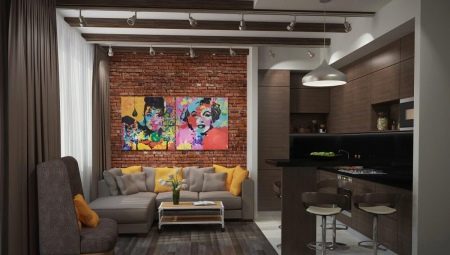
The loft-style interior, especially when it comes to the kitchen-living room, causes a mixed reaction. Some rooms, decorated in this spirit, seem strange and uncomfortable, others are delighted with the special "bohemian" atmosphere that pervades the furnishings. Anyway even a small room must meet a number of requirements in order to match the style exactly.
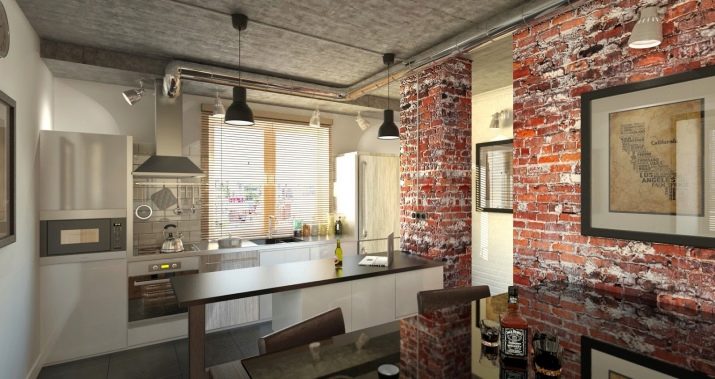
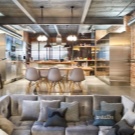
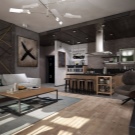
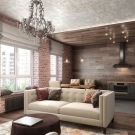
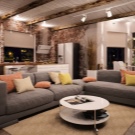
Style features
The loft at one time became the legacy of the American industrial crisis, when business owners abandoned factory space in the center of urban areas in order to save money. On the other hand, the former workshops attracted the attention of creative people, artists who filmed production "abandoned buildings" for exhibition halls and workshops, and at the same time immediately arranged rooms for living.
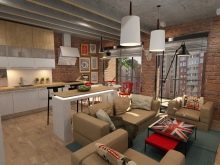
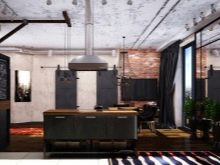
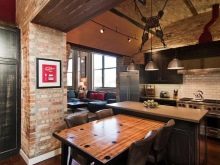
The unpretentiousness of the design is expressed in the fact that Nobody hides the "ears" of the "uninhabited" environment behind elegant curtains and floral wallpaper. On the contrary, a light attitude towards the "industrial basis" to this day emphasizes the creative independence of the inhabitant of loft-style housing. Even from an ordinary kitchen and a room that are part of a normal apartment in a normal residential building, you can create just such a colorful place. It is distinguished by the following features:
- rooms are combined into one room, more spacious;
- ceilings must be high;
- the decoration of the ceiling, walls and floor is deliberately rough;
- elements of industrial design are used in the design.
To dilute the accentuated sharpness of the forms and add an element of special sophistication in the spirit of eco, mosses and grasses, as well as climbing plants, are often used in the design development. (Artful imitation of natural vegetation can be used.)
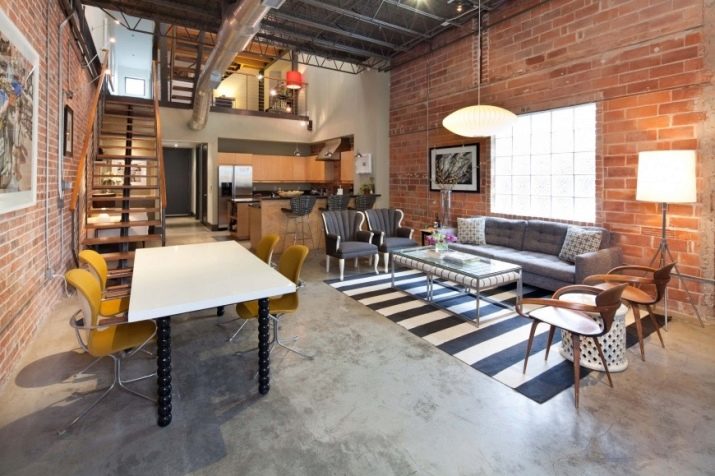
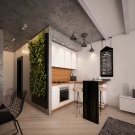
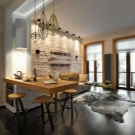
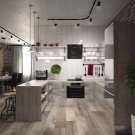
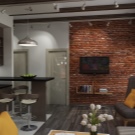
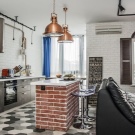
Pros and cons of combining rooms
In the union of rooms that are different in their purpose, such as kitchen and living room, there are both positive and negative sides.
- Even a small studio is perceived as a fairly free space when you don't bump into extra walls and partitions. Due to their absence, it is easy to move around the room.
- All those present in the kitchen-living room can communicate freely - both the hostess, who is busy in the kitchen half, and those who are resting on the side of the living room.
- Children in the combined room are always in sight. It's easy to keep track of them.
- There is no need to install an additional TV in the kitchen. Enough and one located in the recreation area.
- A combined room has more light than two separate ones due to the fact that there are more windows.
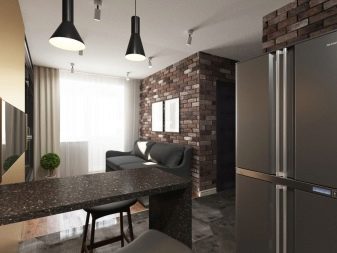
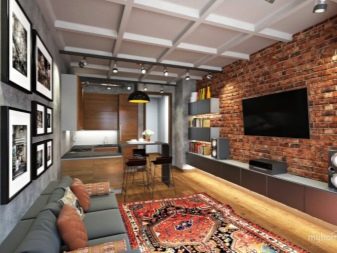
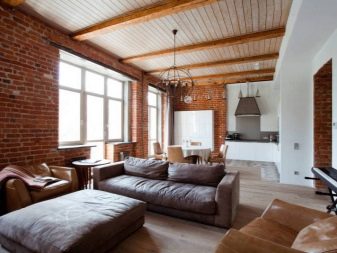
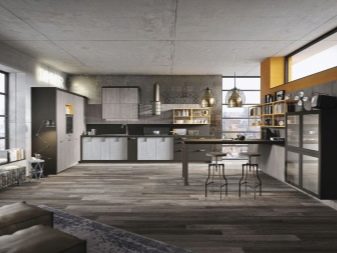
The negative sides of the combination include:
- through the living room, even if the hood is working, the smell from the stove and the kitchen table spreads, while the aroma is not always pleasant (if, for example, something is burnt);
- in the room, you can constantly hear the sounds of the refrigerator, other household appliances, and at times - the water pouring from the tap and the dishes being cooked on the stove;
- Lunches and dinners "under the TV" lead to the fact that people eat more, which means they gain excess weight.



Space zoning
Even in a small studio, when decorating a kitchen-living room, it is necessary to highlight:
- working area for cooking;
- dining room;
- a place for communication and relaxation.
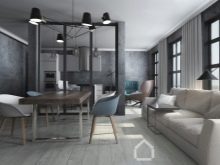
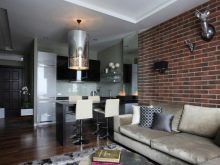
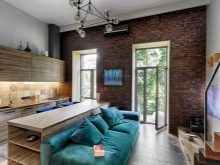
You can delimit the space of a small room:
- thanks to the arrangement of furniture;
- thanks to the color and texture selection of different zones;
- using lighting.
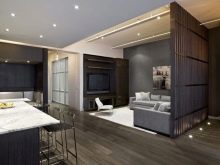
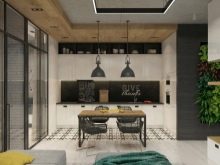
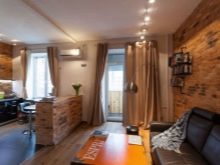
If the space is delimited by furniture, you can use the bar to separate the work area from the dining room or half for relaxation. The back of the sofa also “marks out” the space well.
The walls in each zone are distinguished by their own color and finishes. The level of artificial light in different parts of the room will vary depending on the purpose.

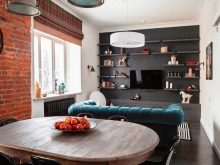
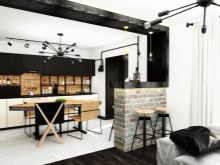
Color spectrum
When developing the image of a loft-style kitchen-living room, you should rely on the following shades:
- red brick;
- Brown;
- Bordeaux;
- Gray;
- black;
- White.
To make the range more diverse, you can add green, blue or beige tones.
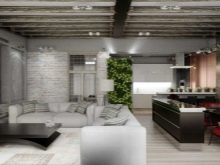
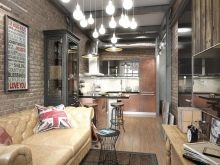
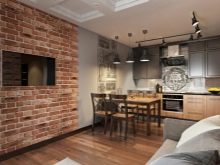
Finishing options
It is difficult to imagine a kitchen-living room without bricks. Both a carelessly processed wood and its imitation will find their place in this setting. Sometimes concrete is used, for example, when finishing the floor. (Although wood and parquet are also common options in this case).
To create the right mood, just one brick wall or brick finish is enough. Other walls can be plastered.
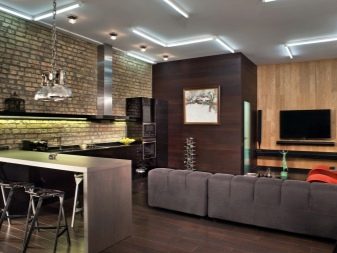
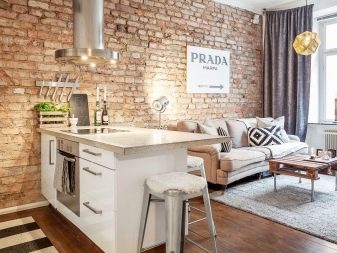
Part of the loft's furnishings is the use of metal frames and pipes. Communications in plain sight are only a plus. Sometimes they deliberately make it so that even the frame of the furniture is visible.
The use of glass in such a room must be approached very thoughtfully. For example, you should not use it as a partition, if only because you will have to wash it often. It is better to use glass in wall decoration, so that, for example, a small studio will appear larger and brighter.
The ceiling can be whitewashed, suspended or suspended. Beams are often used for its design.
There is no sophistication here - the simpler the finish, the better. Moreover, the beams can be generally rough.
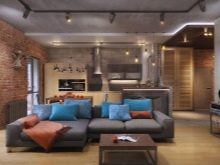

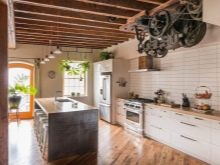
Organization of lighting
The loft-style kitchen-living room has plenty of natural light. And this is possible, first of all, due to the large windows.
If we talk about artificial, important here is the absence of any hint of any pomp... On the contrary, the more primitive and coarse the light sources look, the better. This may be the most ordinary Ilyich lamp without a plafond. They also use lampshades that have a deliberately aged look, bottles and cans, from which lamps of a very original design are obtained.
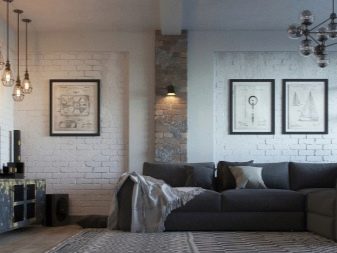
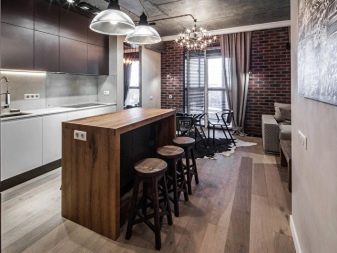
The lighting device can even be made of metal, as if an old piece of iron of unknown purpose was found in an abandoned workshop and adapted to the case.
It is good to organize bright lighting in the working area, allowing you to clearly see all objects around you. In the dining and living area, the light can be more subdued, intimate.

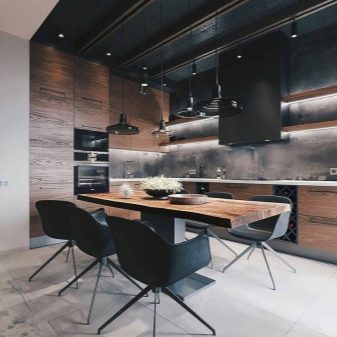
Furniture selection
The contrast in the texture of the furniture is also natural in the kitchen-living room of the loft, as are the deliberate contradictions in the decoration of the room itself. Contemporary furnishings sit quietly side by side with explicit antiques. The high-gloss kitchen is right next to the shelves and dining table in poorly finished wood.
It is imperative to have a soft sofa, which most often has simple shapes. At the same time, there can be an iron shelf, a coffee table, trimmed with chrome. Used and furniture made of pallets, which are painted and varnished.
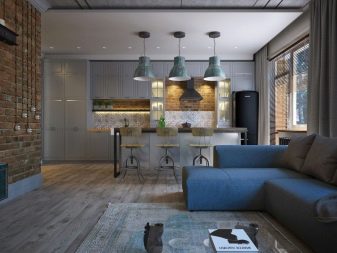
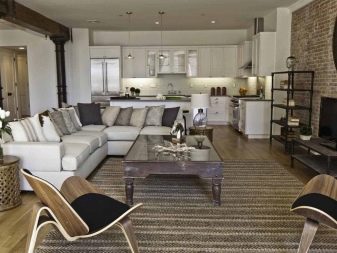
When choosing a kitchen set, you can give preference to models that have glass and metal elements in the finish.
It is appropriate to place bar stools or small stools in the dining area. Although in some cases chairs with a cozy fabric upholstery will come in handy.

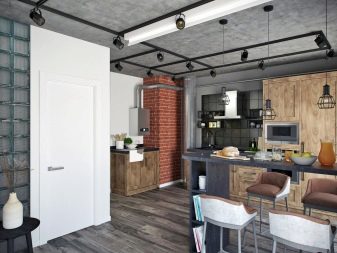
Textiles and decor elements
When organizing a loft-style kitchen-living room, textiles are what you can save a lot on. Window curtains and tablecloths are often not used at all. If the windows are draped with fabric, then they choose strict floor models made of natural fabrics.
To add coziness to the controversial setting, sofas are complemented with pillows. A rug or path is sometimes placed on the floor. Often these are plain or striped things of a deliberately simple, as if rustic, look.
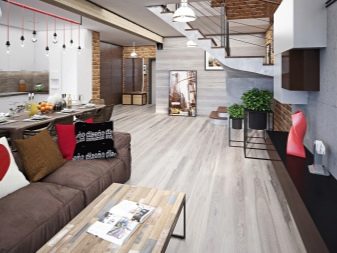

As for the decor, naked, rough, as if the battered, brick most of all emphasizes the direction of the general design... Sometimes this brick is specially painted to make the ostentatious "attempt to polish" the "former warehouse or garage" visible.
In such an environment, flower pots with indoor plants, paintings and black-and-white photos from which the faces of loved ones look are deliberately look.
Forged items, bronze figurines, a shelf lined with books with multi-colored bindings will complement the loft space.
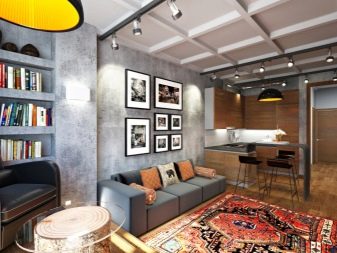
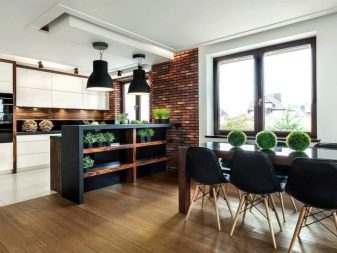
Successful examples
In a small, loft-style studio, the dining area is compressed to the size of a bar, made of almost untreated wood. But the sofa is so deep that it can be used as a bed. A deliberately "unfinished" ceiling, metal bar stools complete the image of a stylish room.

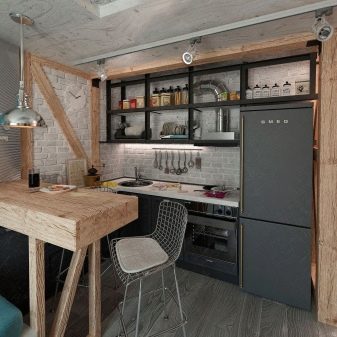
The combination of a white kitchen set with a brick wall, strange lamps, windows devoid of tulle, wooden beams on the ceiling - this is all that is needed for a kitchen-living room of a creative person who does not recognize restrictions and conventions.
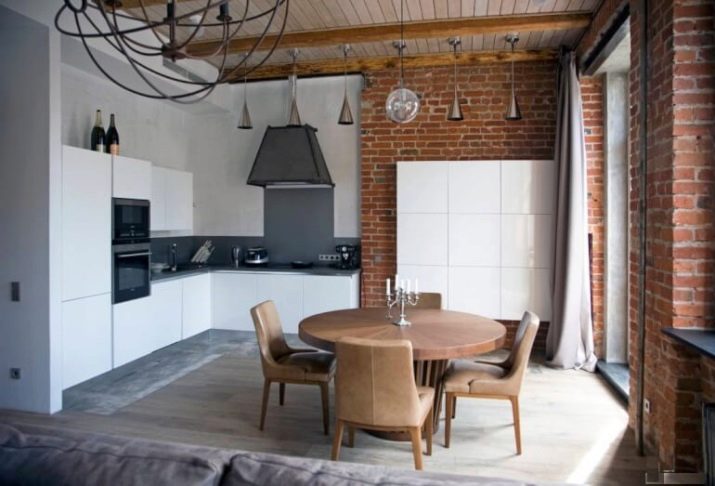
The division of the single space into a living room and a kitchen area with a dining area is accentuated by a high-backed sofa and carpeted floor. The peculiarity of the characteristic "loft" color is also achieved by the use of special lamps and lanterns, as if they were brought from the factory.
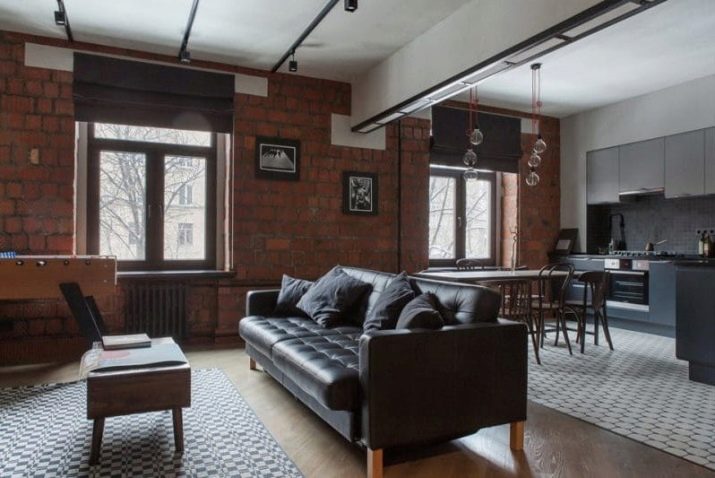
A loft-style kitchen-living room sometimes seems to be an example of comfort even for a sophisticated woman who appreciates airiness in the interior and is used to surrounding herself with elegant little things. The furniture in the working area of the kitchen and dining room is made with a clear hint of heaviness and solidity. At the same time, it goes well with the sofa in the recreation area. The overall impression of the room is reliability and safety.
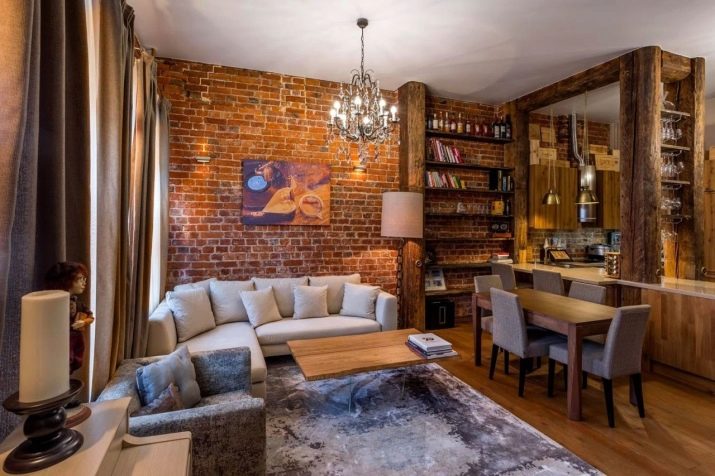
For information on how to create a loft-style interior yourself, see the next video.








